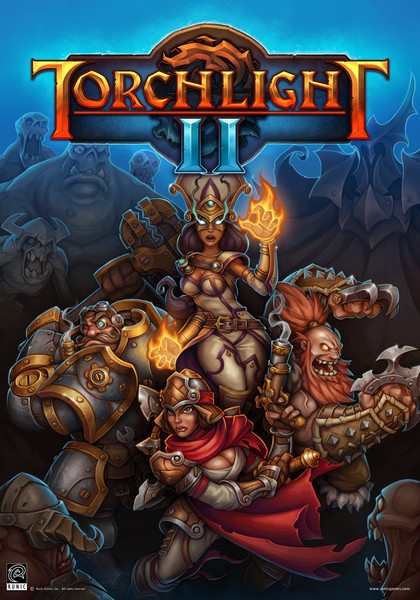Torchlight II Beta Preview
-
Category: PreviewsHits: 23836

Article Index
Page 1 of 3
The action-RPG world has been stirring quite a bit these last few months. With the launch of Diablo III literally a day away, the successful Kickstarter campaign of Grim Dawn, and the beta versions of Path of Exile and Torchlight II running at full steam, the hack-and-slash RPG genre is seeing a sudden explosion of interest from developers and gamers alike, with each of these new contenders trying to capture a different niche around the same basic Diablo-style gameplay. Recently, I've had the chance to try out the Torchlight II beta to see how the oft-delayed game is shaping up now that a release date of "summer 2012" seems like a real possibility. While the game has a ways to go in terms of its overall balance, I'm also happy to say that it's shaping up to be not only a very solid sequel to Torchlight, but is more than compelling enough to compete with Diablo III and the other heavy hitters of the genre as well.
Diablo 2.5
The easiest way to sum up Torchlight II is that it very effectively mimics the transition from Diablo's relatively self-contained dungeon crawling to Diablo II's greater focus on multiplayer, expansive outdoor environments, and of course, the loot slot machine. Where Torchlight was confined to just a couple of dungeon levels, floor after floor, Torchlight II is more structured, with a balance between overland exploration and dungeon-crawling, and a constant stream of new sights to see, monsters to fight and so forth as you progress. Similarly, where Torchlight revolved around hacking and slashing through enemies towards the end boss, Torchlight II puts more emphasis on teamwork in building multiple characters and sending them into online multiplayer (complete with peer-to-peer play and a game browser, just like the good old days).
Even though imitation isn't really a bad thing, it's almost impossible to talk about Torchlight II without bringing up Diablo just because there are so many similarities. The first title was a success because it appealed to a niche at a time when there was little competition; the sequel, meanwhile, is both a tribute to Blizzard's own series and a counterpoint to the much more streamlined Diablo III. However, while it would have been relatively easy to just make a Diablo II clone, Torchlight II sees a number of changes and improvements that make it stand out.
For instance, whereas Diablo's character classes have always adhered to very typical concepts (warrior, wizard, rogue, etc.), and the build archetypes for each class were relatively limited, Torchlight II's most conventional class, the Embermage, is "just" a wizard, while the others combine typical classes seen in most RPGs to form all-new ones that offer a lot of interesting possibilities. The Engineer, for example, is the closest thing the game has to a front-line warrior, and while you can chose to build him (or her) that way, it's also possible to make the Engineer a summoner, a support character, a nuker, and so on. Another addition, the Charge mechanic, sees different character classes getting different bonuses as they perform better in combat - some of them will do progressively more damage as they dispatch enemies quickly, while others can build up and use Charge to gain extra damage or effects when using skills and spells. It's a fun mechanic that encourages you to move forward into the fray rather than play slowly and wait to heal up, and works well for all classes despite being different on each one.
Similarly, while the character system superficially resembles Diablo II's, with four main attributes, plus three-category skill trees with both active and passive benefits for each class, a number of smart choices mean that building a character is a more interesting proposal. Whereas Blizzard's game stumbled by having only a single attribute really matter per class (and at high level play, only Vitality was worth boosting up), Torchlight II's flexibility extends to the attributes as well. Strength increases all weapon damage, for example, regardless of class, while Focus adds to Mana while also increasing elemental damage and chance of dual-attacking when using two weapons at once. While this doesn't make a lot of sense (why does strength make a gun do more damage?) the end result is a character system which is much better balanced and allows all character classes to be successful in a variety of rules, or as generalists.


